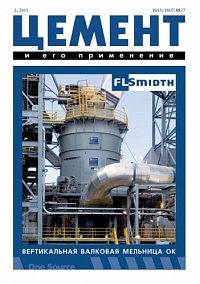The anions HPO4(3-), F-, SO4(2-) and their composition were mixed with some industrial waste into the raw meals of alite -rich рortland clinkers(ARPC). The effects of the anions and the waste on the burnabilities of the raw meals, properties of t...
The results of R&D of compositions and properties of sand cement performed by GP «Institute NIISM» in cooperation with OAO Krasnoselsk-Stroymaterialy are presented. Relevant technical, legal and regulatory documents were developed; experimental pilot batches of sand cem...
The European cement standard EN 197-1 defines Portland composite cements (CEM II-M) which are characterized by two or more main constituents in addition to clinker. The real advantages of this type of cement are in the combined use of the individual strength of ...
Results of the examination of Muraplast FK 63 and Centrilit Fume SX additives produced by MC-Bauchemie as means for improving corrosion resistance of concrete in chloride and sulfate environments are presented.
Changes in the composition of ordinary Portland cement blended with either Class F fly ash or blast furnace slag at 30% replacement of cement have been investigated from 1 hour to 20 years. A nearly “steady state” aqueous phase composition is achieved during the ini...


